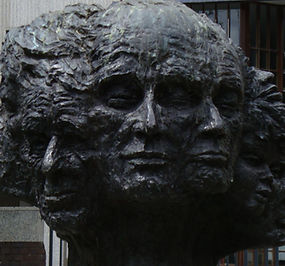
Asarum Retreats ~ Sanctuary for the Soul ~ Santa Barbara, California
Thoughts and Musings

Films that Heal
Among the many treasures of Santa Barbara, is the world renowned Santa Barbara International Film Festival. There were several healing films in the festival this year. I've listed a few of my favorites on my blog page. Please visit my "Films that Heal" blog post.
The winner of this year's Fund for Santa Barbara Social Justice Award was: "A Snake Gives Birth to a Snake," directed by Michael Lessac.
The following excerpt is from sbiff.org:
A diverse group of South African actors tours the war-torn regions of Northern Ireland, Rwanda, and the former Yugoslavia to share their country’s experiment with reconciliation. As they ignite a dialogue among people with raw memories of atrocity, the actors find they must once again confront their homeland’s violent past – and question their own capacity for healing and forgiveness. Featuring never-before-heard original music by jazz legend Hugh Masekela. (Durban Film Festival)
"A Snake that Gives Birth to a Snake" reveals how conflict and war is carried across generational lines and geographical boarders. It also shows how generations of today are helping to end old cultural grudges, and heal pain resulting from the most inconceivable atrocities. The brave performances and experiences of the actors compel us to face the nature and reality of both the dark and light side of humanity. While this is not a light-weight watch, it is a critically important and powerful contribution, and I believe it would behoove us to include films of this nature in every country's educational system.
Other notable "Films that Heal" include: "I Am Femin," "Sins of a Father," "Judgment," "The Farewell Party," and "McFarland."
***

The Other Woman (and Man)
The focus of my doctoral work was to understand the dynamics of the triadic relationship from the other woman’s point of view.
My primary goal was to find ways to help ease the pain often experienced by all parties involved in and affected by these often complex and problematic relationships, which can lead to severe suffering, alienation, heartbreak, and in extreme cases, even murder and/or suicide.
The following is an excerpt from my doctoral dissertation abstract:
Although she has been with us for eons, the other woman’s true identity has been all but erased from existence. She has been buried in the shadows of society’s taboos, relegated to the role of the scapegoat, and burdened with carrying negative projections of an ill-begotten stereotype.
Using Carl Jung’s theories of the archetypes and complexes and James Hillman and Pat Berry’s archetypal psychology, the researcher explored and contrasted the lived experiences of the other woman stereotype and the other woman archetype portrayed in film over the last hundred years, as well as women in history, including pioneering feminist, Anaïs Nin, and the mother of depth psychology, Sabina Spielrein.
The other woman archetype proved to be elusive because her identity has been mostly usurped by negative stereotypes. Further, the problems resulting from othering the other woman do not rest in the dyad or in the triadic relationship, but originate with the problem of the imbalance of masculine and feminine energy on the planet.
The researcher concludes with the hope that the other woman can be revisioned as just “another woman,” on an individuation journey towards the Whole Woman archetype.
***

Betrayal
Infidelity and betrayal are considered taboo topics, but there are many aspects to these taboos. Demystifying and disempowering betrayal was one of the outcomes of my extensive research on the phenomenon of "The Other Woman."
Anaïs Nin and Sabina Spielrein were among "the other women" whose lives I explored. Each of the women had her own unique encounter with betrayal.
More to come on this topic...
